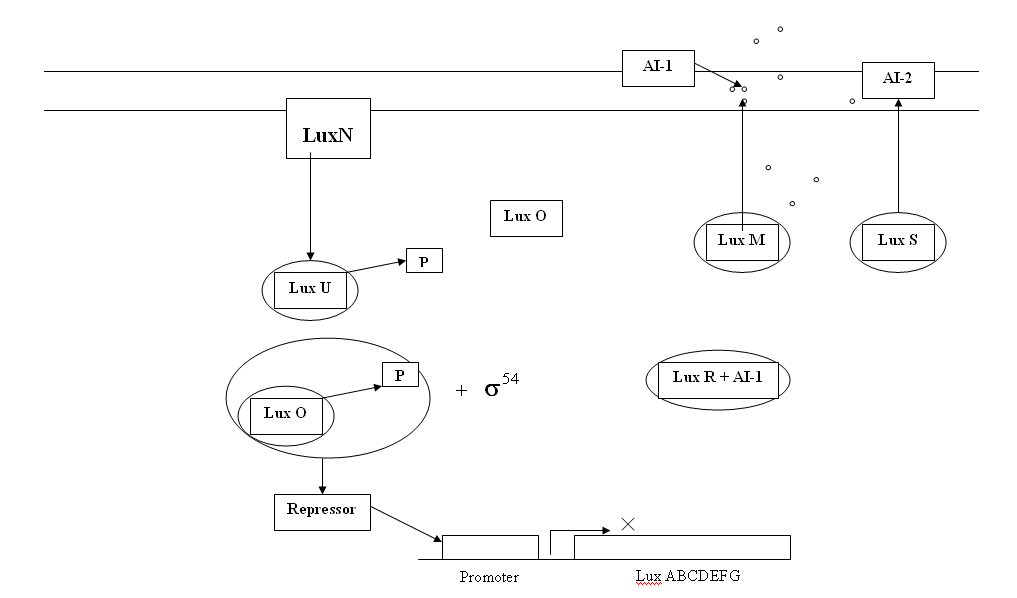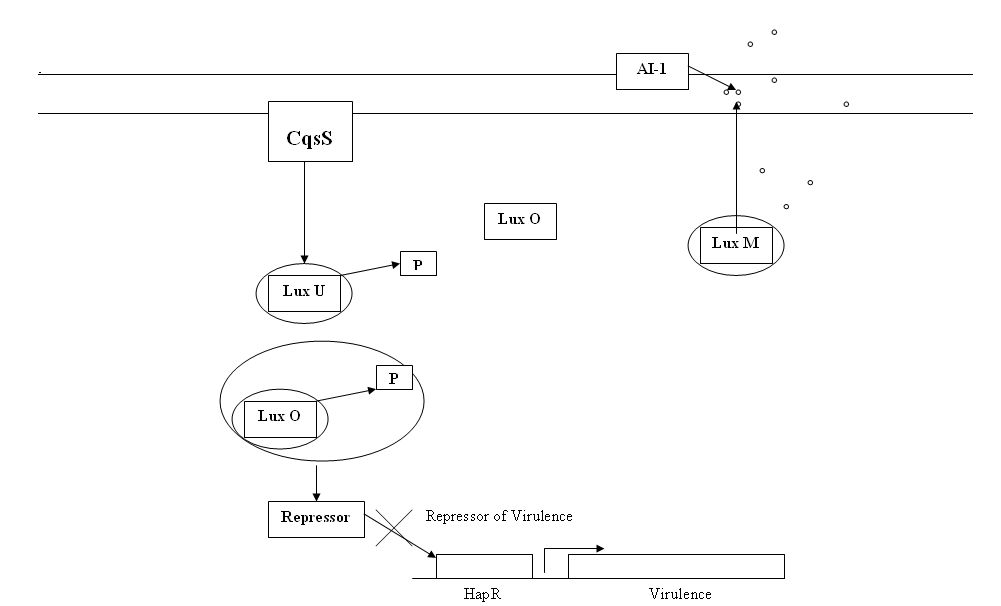University of Sheffield/18 July 2008
From 2008.igem.org
(Difference between revisions)
m |
m |
||
| Line 29: | Line 29: | ||
| style="background-color: green;" | <span style="color: white;">The cascading pathway(''above'') is similiar to the one of ''V.harveyi'' but with a slight difference. In ''V.Cholera'' HapR i.e. the promoter site is not intact with the repressor gene thus transcription of virulence takes place. </span> | | style="background-color: green;" | <span style="color: white;">The cascading pathway(''above'') is similiar to the one of ''V.harveyi'' but with a slight difference. In ''V.Cholera'' HapR i.e. the promoter site is not intact with the repressor gene thus transcription of virulence takes place. </span> | ||
|} | |} | ||
| + | |||
| + | |||
| + | ==Conclusion== | ||
| + | As we intend to modify the E-Coli in a way so that its receptor can sense ''V.Cholera & Legionella''. The problem here is that both V.Cholera and Legionella have cascading pathways where reactions take place in a series of steps whereas in E.Coli all reactions are simultaneous. So we might have to introduce '''TWO''' plasmids in E.Coli tp perform the job. | ||
Revision as of 00:50, 19 July 2008
Conclusion
As we intend to modify the E-Coli in a way so that its receptor can sense V.Cholera & Legionella. The problem here is that both V.Cholera and Legionella have cascading pathways where reactions take place in a series of steps whereas in E.Coli all reactions are simultaneous. So we might have to introduce TWO plasmids in E.Coli tp perform the job.
 "
"

